Have you ever wondered how makeup is made or struggled to create effective and innovative cosmetic formulas that meet the demands of your customers? The beauty industry is constantly evolving, and staying ahead of the game can be a daunting task. Creating high-quality and effective cosmetic formulas that stand out in a crowded market is a challenge that many professionals face.
In this article, we will provide you with 8 simple steps to help you create effective and innovative cosmetic formulas for private label natural cosmetics that will meet the demands of your customers and help your brand stand out. From understanding your target audience and selecting the right ingredients to testing and tweaking your formula, we’ve got you covered.
So, if you’re ready to take your cosmetic formulas to the next level, read on to discover our simple and effective 8-step process.
1. The Basics of Cosmetic Formulas
Cosmetic formulas are a set of instructions that detail the ingredients and their quantities needed to make a specific cosmetic product. These formulas can include everything from the base ingredients to the additives used to give the product a certain texture, scent, or color. Cosmetic labs in California, among others, often develop and refine these formulas to ensure the highest quality and innovation in cosmetic products.
Cosmetic formulas are critical in the cosmetic industry because they allow manufacturers to create products that meet specific consumer needs and desires. They are also essential in ensuring that the product is safe and effective.
According to Mordor Intelligence , the global cosmetic market size was valued at USD 532.43 billion in 2020 and is expected to reach USD 805.61 billion by 2026, growing at a CAGR of 7.14% from 2021 to 2026. With the increasing demand for cosmetic products, I suggest following a formula to ensure that the product contains the right balance of ingredients and provides the desired benefits without causing harm to the user.
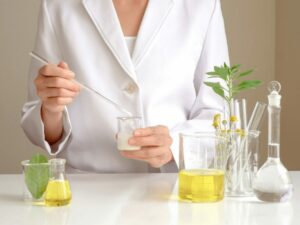
2. Determine the Product Type
When creating a cosmetic formula, determining the product type is crucial to ensure that the formula contains the appropriate ingredients and their quantities. Here are some factors to determine the product type for a formula:
Identify the Primary Purpose of the Product
The first step is to determine what the product is intended for. Is it a skincare product, a hair care product, a makeup product, or a fragrance product? This will help you understand the category of the product and what kind of ingredients are typically used for that category.
Consider the Specific Use of the Product
Once you have identified the primary purpose of the product, the next step is to determine its specific use. For example, if it’s a skincare product, is it a daily moisturizer, a night cream, or a serum? If it’s a hair care product, is it a deep conditioner or a leave-in treatment?
If it’s a makeup product, is it a foundation for oily skin or a waterproof mascara? This will help you understand the specific requirements of the product and the kind of ingredients that need to be included.
Determine the Product Form
The next step is to determine the product form. You can choose from lotion, cream, gel, powder, or spray. The product form will determine the texture, consistency, and application of the product, which can affect the kind of ingredients used.
Take Note of Any Additional Claims or Benefits
Finally, it’s important to consider any additional claims or benefits the product may provide. For example, is it a vegan or organic product, or does it contain specific active ingredients that provide anti-aging or brightening benefits? This will help you fine-tune the formula and ensure that it meets the needs of the target audience.
By considering these factors, you can determine the product type and create a formula that is tailored to meet the specific needs of that product. This ensures that the final product is effective, safe, and meets the expectations of consumers.
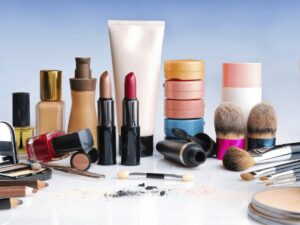
3. Establish Product Specifications
When creating a cosmetic formula, it’s important to establish product specifications to ensure that the final product meets the desired quality and performance standards. Here are some of the specifications a cosmetic formula, developed by cosmetic formulation companies, must meet:
Ingredient Specifications
This includes the types of ingredients that can be used in the formula, the allowable concentration ranges, and any restrictions on the use of certain ingredients. This ensures that the formula is safe for use and complies with any regulatory requirements.
Physical Specifications
This includes the appearance, texture, and other physical properties of the finished product. For example, a lotion may need to have a specific viscosity or a lipstick may need to have a certain level of pigmentation.
Performance Specifications
This includes the product’s intended performance and any claims made about its effectiveness. For example, a moisturizer may need to provide a specific level of hydration, or sunscreen may need to provide a specific level of UV protection.
Stability Specifications
This includes the product’s shelf life and any requirements for stability testing. This ensures that the product remains safe and effective throughout its shelf life. I suggest this to ensure that the product remains stable and effective under normal storage conditions for the duration of its shelf life.
The specifications should be documented and shared with the manufacturing team to ensure consistency across batches.
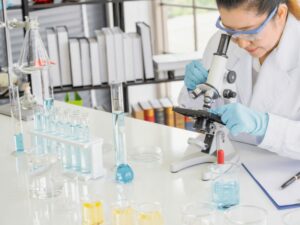
4. Choose the Ingredients
Choosing the right ingredients is a crucial step in creating a successful cosmetic formula. Here are some factors to consider when selecting ingredients:
Primary Active Ingredients
The active ingredients should be chosen based on the product’s intended purpose and desired benefits. For example, if creating a moisturizer, ingredients such as hyaluronic acid or glycerin can be used for hydration. If creating an anti-aging cream, ingredients like retinol or vitamin C may be used.
Functional Ingredients
The functional ingredients should be chosen based on the desired texture and stability of the product. Emulsifiers, thickeners, and preservatives are examples of functional ingredients that can be used in various types of cosmetics.
Fragrance and Flavor Ingredients
These ingredients should be chosen based on the established product specifications and target market preferences. For example, essential oils or synthetic fragrances can be used to add a desired fragrance to the product, and sweeteners can be used to add flavor to a lip balm.
Color Additives
The appropriate color additives should be selected based on the product type and the desired shade or hue. For example, pigments, dyes, and micas can be used to add color to a makeup product.
Ingredient Safety
All ingredients used in the formula should be safe for use and meet regulatory requirements. This includes researching each ingredient to determine any potential risks associated with their use, such as skin irritation or allergic reactions.
Ingredient Source
The source of the ingredient can be important for ethical, environmental, or marketing reasons. Some consumers prefer ingredients that are vegan, cruelty-free, or sustainably sourced. I recommend choosing ingredients that align with these values to meet the growing demand for sustainable and ethical products.
Cost
When choosing ingredients, it’s important to consider the cost of each ingredient and how it will affect the final product price. Selecting cost-effective ingredients that still meet product specifications can help create a competitively priced product that appeals to a wider audience.
| Average price range of cosmetic ingredients |
| Ingredients |
Description |
Price Range per Unit |
Quantity Used |
Cost Range per Batch |
| Hyaluronic acid |
A hydrating ingredient used in skincare |
$20-$60 |
2g |
$4-$12 |
| Retinol |
An anti-aging ingredient used in skincare |
$50-$100 |
1g |
$5-$10 |
| Glycerin |
A hydrating ingredient used in skincare and hair care |
$10-$30 |
5g |
$0.50-$1.50 |
| Emulsifying wax |
An ingredient used to emulsify water and oil in skincare and hair care |
$20-$40 |
10g |
$2-$4 |
| Preservative |
An ingredient used to extend the shelf life of cosmetic products |
$5-$20 |
2g |
$0.50-$2 |
| Pigment |
An ingredient used to add color to cosmetic products |
$5-$15 |
1g |
$0.25-$0.75 |
By selecting the appropriate ingredients, the final product can meet the established specifications and provide the intended benefits to the target market. The ingredient list should be documented and shared with the manufacturing team to ensure consistency across batches.
5. Determine the Formula Proportions
To determine the formula proportions, it’s important to calculate the weight of each ingredient based on the established formula. Here are the steps to follow:
Step#1 Follow the Established Formula
Use the established formula as a starting point and ensure that all required ingredients are included in the recipe.
Step#2 Determine the Required Batch Size
Determine the size of the batch you wish to produce to calculate the required amounts of each ingredient. This will depend on the size of the container or number of units you plan to produce.
Step#3 Use Appropriate Measuring Tools
Use appropriate measuring tools such as a digital scale, graduated cylinder, or pipettes to ensure accurate measurement of each ingredient. This is important to ensure that the proportions of the ingredients are correct and consistent across batches.
Step#4 Calculate the Weight of Each Ingredient
Calculate the weight of each ingredient based on the required proportions in the established formula. This can be done using a spreadsheet or calculator. For example, if the formula calls for 2% of an ingredient in a 500-gram batch, you will need to add 10 grams of that ingredient.
Step#5 Weigh Each Ingredient
Once the weight of each ingredient has been calculated, carefully weigh each ingredient using the measuring tools to ensure accurate measurement. I suggest mixing the ingredients thoroughly to ensure that they are evenly distributed.
By following these steps, you can create a cosmetic formula with the correct proportions of each ingredient, ensuring that the final product meets the established specifications and provides the intended benefits to consumers.
Check out this example video tutorial on calculating percentages in cosmetic formulas!
6. Testing the Formula
Testing is a crucial step in the process of creating a cosmetic formula as it ensures that the final product is safe, effective, and meets consumer expectations. There are several types of testing that can be done to ensure that the formula meets the established specifications. Here are some of the most common types of testing:
Stability Testing
This type of testing involves exposing the formula to various environmental conditions such as temperature, light, and humidity to determine its stability over time. This testing ensures that the formula will remain effective and safe for use over its intended shelf life.
Microbial Testing
This type of testing involves evaluating the formula for microbial contamination to ensure that it is safe for use. This testing is particularly important for products that are applied to the skin or mucous membranes.
Safety Testing
This type of testing involves evaluating the formula for potential skin or eye irritation or sensitization. I recommend this testing to ensure that the final product is safe for use and does not cause adverse reactions.
Efficacy Testing
This type of testing involves evaluating the formula to ensure that it provides the intended benefits. For example, if the product is intended to moisturize the skin, efficacy testing would involve measuring the level of hydration before and after product application.
Consumer Testing
This type of testing involves giving the final product to a group of consumers to use and provide feedback on its effectiveness, texture, scent, and overall experience. This testing is important to ensure that the final product meets consumer expectations and preferences.
By conducting these types of testing, you can ensure that the final product meets the established specifications and provides the intended benefits to consumers. Testing also helps identify any potential issues that can be addressed before the product is released to the market.
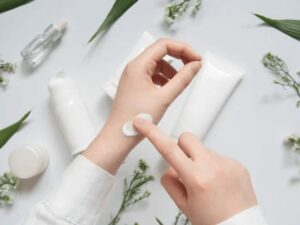
7. Refining the Formula
After testing the initial formula, it may be necessary to refine the formula to improve its efficacy, safety, stability, or consumer appeal. Here are some steps to follow when refining the formula:
Step#1 Review the Testing Results
Review the testing results to identify any issues or areas for improvement. This will help you determine the changes needed to refine the formula.
Step#2 Determine the Required Changes
Based on the testing results, determine the changes needed to improve the formula. This may involve adjusting the proportions of the ingredients, adding or removing certain ingredients, or changing the manufacturing process.
Step#3 Re-Formulate the Product
Re-formulate the product to incorporate the required changes. It’s important to carefully document the changes made to the formula and to test the refined formula again to ensure that it meets the established specifications.
Step#4 Test the Refined Formula
Test the refined formula to evaluate the effectiveness of the changes made. I suggest repeating the testing process until the formula meets the established specifications and provides the intended benefits.
This process may involve trial and error, but it’s a crucial step in creating a high-quality product that meets consumer needs and expectations.
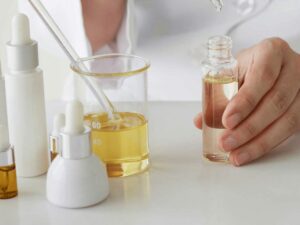
8. Finalizing the Formula
Finalizing the formula is the last step in the cosmetic formula creation process, and it involves ensuring that the formula meets the established specifications and is ready for production. Here are the final steps involved in finalizing the formula:
Step#1 Review and Approve the Final Formula
I recommend reviewing the final formula to ensure it meets the established specifications and make any necessary adjustments. Once the final formula has been approved, it is ready for production.
Step#2 Document the Final Formula
Document the final formula, including all the ingredients and their proportions. This information is critical for future use when producing the same product.
Step#3 Specify Manufacturing Details
Develop a detailed manufacturing process that specifies the steps involved in producing the final product. This may include testing the raw materials, blending the ingredients, filling and packaging the product, and performing quality control checks.
Step#4 Conduct Quality Control Checks
Conducting quality control checks is an important step to ensure that the final product meets the established specifications. These checks may involve visual inspections, physical and chemical tests, and sensory evaluations. It’s essential to perform quality control checks to ensure that the final product is of high quality and meets the expectations of consumers.
Step#5 Prepare for Production
Prepare for large-scale production of the final product. This may include sourcing raw materials, training personnel, and ensuring that all equipment is in good working order.
Step#6 Produce the Final Product
Producing the final product involves manufacturing it in large quantities while ensuring that it meets the established specifications for safety, efficacy, stability, and consumer appeal. It’s important to produce the final product in a controlled environment with strict adherence to the manufacturing process and to the regulatory requirements for safety and efficacy.
Documenting the final formula is an essential step in the process, as it ensures that the formula can be recreated in the future. The documentation should include all ingredients, their proportions, and any necessary manufacturing details. By documenting the formula, you can ensure consistency in the final product, regardless of who is producing it.
If you want a guide on how to create cosmetic formulas, contact us at Nako Cosmetic. We can help you create high-quality and effective cosmetic products that meet your specific needs and requirements. Contact us today to learn more.
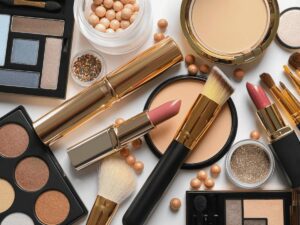
Dive Deeper Into Our Resources
For some insightful reads, we’ve curated a list of recommended articles just for you:
Still haven’t found what you’re looking for? Don’t hesitate to contact us. We’re available around the clock to assist you.
9. Conclusion
In conclusion, creating a cosmetic formula can seem like a daunting task, but by following the eight simple steps outlined in this guide, the process can become more manageable. With the right approach and guidance, anyone can create a successful and effective cosmetic formula
I hope this guide has provided useful information on the process of creating cosmetic formulas and has helped to demystify the steps involved. If you still have any questions or concerns, contact us at Nako Cosmetic. Our team of experts can provide guidance and support to help you create successful and effective cosmetic products.





